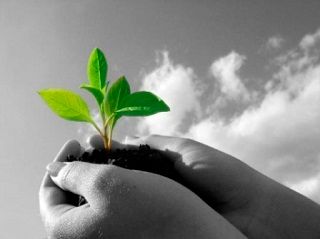From Guest Blogger Lana Hawkins: Small Green Steps for the Brighter Future

Recycling and Reusing
Recycle computers, cell phones and other electronics. They contain toxic materials like mercury that, if placed on a dumpsite, would be released in the soil.
Avoid buying bottled water, because a great deal of plastic water bottles are not recycled. Get yourself a water filter to purify tap water, and pour it in a reusable bottle container. It is a great choice for our water supplies, and for your wallet also.
You can recycle glass, old newspapers and magazines, unwanted wire hangers, cardboard, aluminum and steel cans, thus reducing air pollution and timber harvest. Find out if there is a recycling program in your community and contribute.
Reuse old building materials and house elements. When building a home, use a third-party forest standard lumber (e.g. bamboo), stone and recycled metal. People get rid of house elements like doors, flooring, windows and furniture during renovations or demolitions. It can be bought, refurnished and reused.
Energy
Change incandescent light bulbs with fluorescent ones. If you don’t like the light color, mount it in storage or laundry rooms, where it won’t bother you.
Instead of putting your computer in sleep mode at night, turn it off and save 40 watt-hours per day.
Use machines as less as possible. Wash your clothes in cold water instead in a washing machine (a great deal of energy goes on water heating). If you can’t wash in cold water, launder only when you have a full load. Instead of using the dryer, dry naturally on a clothing rack.
Remember to unplug your appliances when you’re not using them.
Take advantage of renewable energy technology. Find out what kind of power generating devices are available to you. Try to switch to solar, hydro or wind power generating.
Non-Toxic Products
Use non-toxic house cleaning products. Chemical-based products are expensive and members of the household get exposed to toxic vapors. Natural and environmentally safe alternatives like lemon, soap, white vinegar, citrus solvent and baking soda can be used for cleaning and disinfecting your home.
If pests and vermin inhabit your house, use organic and natural pest control supplies to keep them out. Toxic products help us fight pests, but they can be dangerous, especially for children and pets. If you have garden pests, toxic poisons are released and retained in the soil. There are great barriers and traps that you can buy to fight pests, or make a non-toxic homemade remedy.
Water and Fossil Fuels
Planets supplies of fossil fuel and water are not renewable. Use the water from your tap if it meets water quality standards. Otherwise, buy a water filter to remove contaminants.
Reduce water usage around your home. Don’t let the water run while brushing teeth and shaving. Fix those toilet and faucet leaks, and turn on the dishwasher only with a full load. Water you lawn only when needed. Great way to keep your lawn green and fresh, and still to save considerable amount of water every day is to use grass pavers. Tighten the tap whenever and wherever you can.
When it comes to fuels, you can reduce the toxic fumes and air pollutions by driving less. Instead of driving, you can walk or ride a bike, which is also a good exercise for you. If you have to drive, then drive efficiently, with properly inflated tires and a tuned-up vehicle.
If there is a possibility for you to buy a “green” vehicle, take it. There are hybrid and electric cars that save both gas and money, and are environmentally friendly.
Author’s Bio: Lana Hawkins is an architecture student from Sydney, Australia. She loves reading about green building and sustainability. In her free time, Lana writes about garden design and landscaping, creates new recipes, and goes cycling. Follow her on Twitter.
Image Source: http://blog.law.cornell.edu/voxpop/files/2011/08/Vox.Sustainability.jpg
